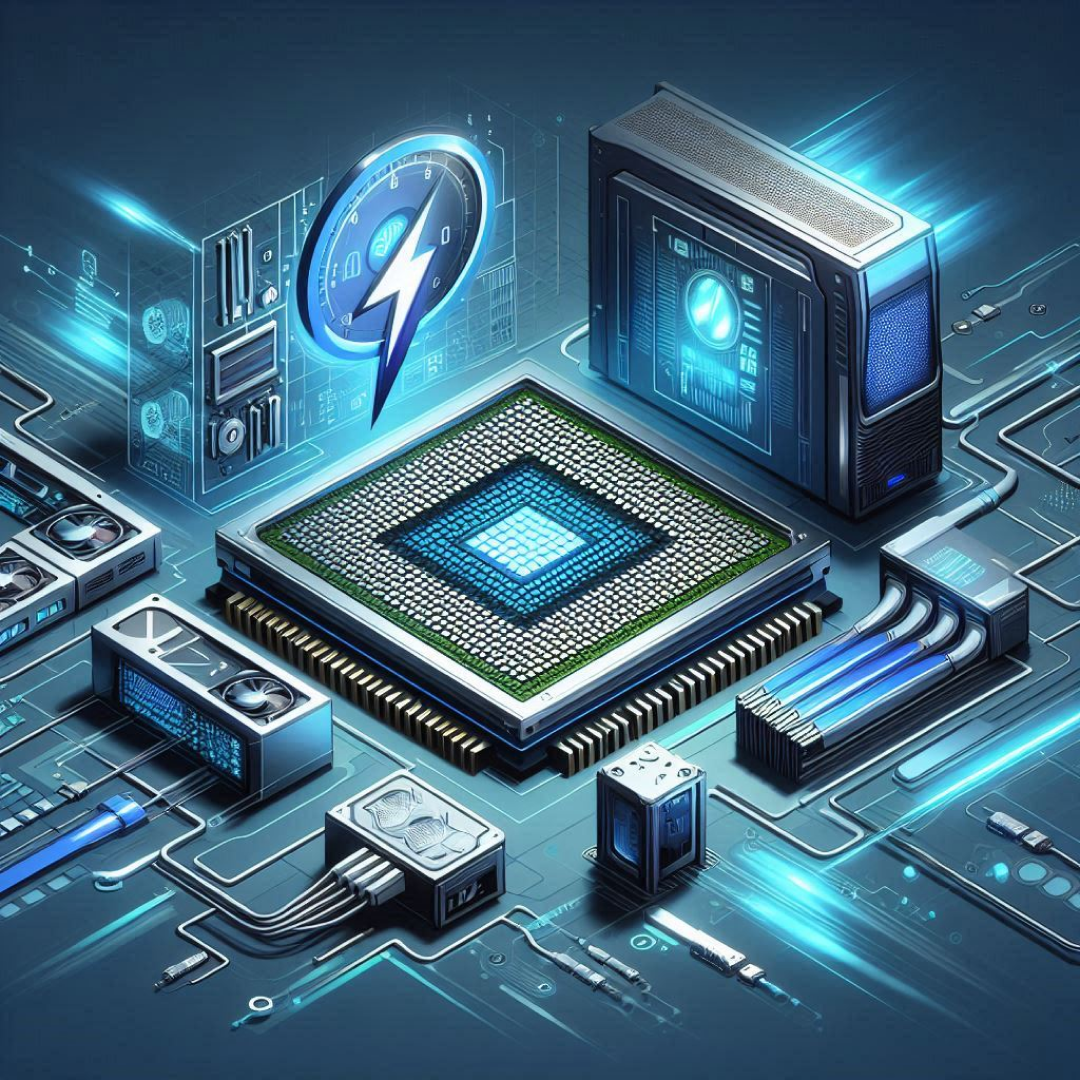
High performance computing plays a critical role in advancing technology. It is especially important in fields that require rapid data processing and complex calculations. This blog explores the architecture, components, and applications of high-speed computation hardware, emphasizing its significance in modern computing environments.
Architectural Overview
1. Evolution of High Performance Computing Processors
The evolution of processors has been instrumental in enhancing computational speed. Early microprocessors, like the Intel 8085A, were limited in efficiency and processing power. The introduction of the Intel 8086 marked a major improvement, offering enhanced addressing capabilities crucial for applications such as image processing and real-time computation. Over time, high performance computing has evolved further, integrating multi-core architectures and optimized instruction sets.
2. Multi-Processor Systems in High Performance Computing
Modern high performance computing systems leverage multi-processor architectures to enable parallel processing. These systems execute multiple tasks simultaneously, significantly improving throughput. The design focuses on minimizing inter-processor communication delays. For example, the BVV 2 image pre-processor architecture assigns independent picture processors to specific tasks. As a result, processing speed increases while programming remains straightforward.
3. Memory Architecture for High-Speed Computation
Memory architecture plays a crucial role in high performance computing. In earlier systems, limited RAM capacities restricted processing power. Fortunately, modern high-speed memory modules have eliminated this issue. For instance, the BVV 2 system features picture processors with RAM ranging from 40 to 148 KB, enabling real-time execution of complex algorithms.
Key Components of High Performance Computing Hardware
1. Processors
The processor is the core of any high performance computing system. Modern processors, such as those based on the x86 architecture, deliver faster performance through higher clock speeds and multiple cores. Consequently, they are essential for a wide range of applications, from simple arithmetic to complex simulations and data analysis.
2. Memory Systems
High performance computing hardware relies on multiple types of memory to optimize speed and efficiency:
RAM (Random Access Memory)
RAM provides fast read and write access. This is essential for temporary data storage during computation.
Cache Memory
Cache memory is a smaller, faster type of volatile memory. It stores frequently accessed data, speeding up processing times.
Non-volatile Memory
Non-volatile memory is used for long-term data storage. It ensures data persistence even when the system is powered off.
3. Input/Output Interfaces
Efficient input/output (I/O) interfaces are vital for high performance computing. These interfaces ensure rapid data transfers between processors and peripheral devices. Additionally, technologies such as PCIe (Peripheral Component Interconnect Express) improve I/O speed, allowing components to communicate efficiently.
Performance Metrics in High Performance Computing
1. Throughput and Latency
Throughput measures the amount of data processed within a given time frame, whereas latency refers to the time required to process a single unit of data. Ideally, high performance computing systems aim to maximize throughput while minimizing latency. As a result, they ensure efficient data processing.
2. Benchmarking
Performance benchmarking is essential for evaluating the capabilities of high-speed computation hardware. Standard benchmarks, such as SPEC (Standard Performance Evaluation Corporation) and LINPACK, provide metrics for comparing the performance of different systems under various workloads.
Applications of High-Speed Computation Hardware
1. Scientific Computing
High performance computing is indispensable in scientific computing. Many complex simulations and data analyses require substantial processing power. For example, climate modeling, molecular dynamics, and astrophysics all rely on fast computation to process vast amounts of data accurately.
2. Image and Signal Processing
In fields such as computer vision and signal processing, high-speed computation hardware enables real-time processing of large data sets. Systems like the BVV 2 pre-processor are designed specifically for image processing tasks. They allow for rapid feature extraction and analysis.
3. Artificial Intelligence and Machine Learning
Artificial intelligence (AI) and machine learning (ML) rely heavily on high performance computing hardware. Training AI models requires significant computational resources. Thankfully, advancements in GPUs (Graphics Processing Units) and TPUs (Tensor Processing Units) have dramatically improved AI training speed and efficiency.
4. Financial Modeling
In the finance sector, high-speed computation hardware is used for algorithmic trading, risk assessment, and financial modeling. The ability to process vast amounts of data in real-time allows for more informed decision-making and faster execution of trades.
Future Trends in High Performance Computing
1. Quantum Computing
Quantum computing is expected to revolutionize high performance computing. Unlike classical computers, quantum computers can process vast amounts of data simultaneously. As research progresses, integrating quantum processors with traditional computing systems could unlock unprecedented capabilities.
2. Neuromorphic Computing
Neuromorphic computing mimics the human brain’s neural structure, enabling efficient processing of complex data patterns. This approach has the potential to revolutionize AI, particularly in fields like natural language processing and image recognition.
3. Edge Computing and IoT
The rise of IoT (Internet of Things) has driven the development of edge computing. In this model, high performance computing hardware processes data closer to the source, reducing latency and bandwidth usage. Applications include autonomous vehicles, smart cities, and industrial automation.
Conclusion
High performance computing is driving innovation across industries, from AI and scientific computing to finance and real-time data processing. As technology advances, Algorithms and Applications in High-Speed Computation will be key to optimizing performance and efficiency.
As computing evolves, innovations such as quantum computing, neuromorphic architectures, and edge computing will drive further advancements. In essence, high performance computing is more than just faster hardware—it is about smarter, more efficient computing that solves complex challenges and unlocks new possibilities.
Do you like to read more educational content? Read our blogs at Cloudastra Technologies or contact us for business enquiry at Cloudastra Contact Us.